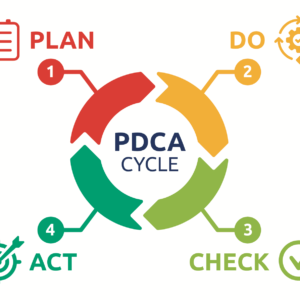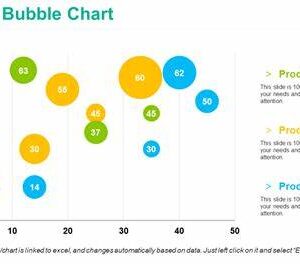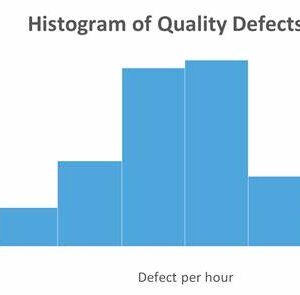In today’s increasingly connected world, cybersecurity is more important than ever. The rise of cyber threats has prompted governments, regulatory bodies, and industry leaders to develop comprehensive cybersecurity standards and regulations to protect sensitive data and maintain system integrity. Organizations across various sectors are required to comply with these cybersecurity regulations to avoid legal and financial risks, protect their reputations, and ensure the safety of their users’ information.
However, navigating the complex landscape of cybersecurity compliance can be a daunting task. From global regulations to industry-specific standards, understanding and adhering to these rules can seem like an overwhelming challenge for businesses, particularly smaller organizations with limited resources.
In this blog, we will explore what cybersecurity compliance is, why it’s essential, and how businesses can navigate the various regulations and standards that govern the cybersecurity landscape.
What is Cybersecurity Compliance?
Cybersecurity compliance refers to the process of adhering to a set of policies, regulations, and standards aimed at protecting information systems from security breaches, cyberattacks, and other vulnerabilities. Compliance ensures that organizations implement the necessary security controls, processes, and risk management strategies to protect sensitive data from unauthorized access, use, disclosure, alteration, or destruction.
Compliance regulations vary depending on the industry, geographic location, and the type of data an organization handles. While some standards are mandatory, others are voluntary but still highly recommended for establishing best practices in cybersecurity.
Why Cybersecurity Compliance is Crucial
-
Legal and Financial Risks: Failing to comply with cybersecurity regulations can lead to legal penalties, hefty fines, and even lawsuits. Regulatory bodies such as the European Union’s GDPR and the U.S. HIPAA law enforce compliance with strict fines for non-compliance.
-
Protecting Sensitive Data: Personal, financial, and health data are high-value targets for cybercriminals. Compliance ensures that businesses implement security measures to protect this information, reducing the risk of data breaches and identity theft.
-
Reputation Management: A data breach or failure to protect customer data can seriously damage a company’s reputation. Maintaining cybersecurity compliance helps establish trust with customers, partners, and stakeholders.
-
Business Continuity: Cyberattacks can result in the disruption of operations, causing downtime, loss of revenue, and damage to critical business assets. Compliance requirements often include disaster recovery and business continuity planning to help mitigate these risks.
Key Cybersecurity Regulations and Standards
Navigating cybersecurity compliance can be tricky as there are several important regulations and standards that businesses may need to follow. Below are some of the most widely recognized and enforced cybersecurity regulations and frameworks:
1. General Data Protection Regulation (GDPR)
The GDPR is a comprehensive data protection regulation enacted by the European Union that applies to any organization processing the personal data of EU citizens, regardless of where the business is located. It mandates the protection of personal data through strict security measures, clear consent protocols, and the right for individuals to access and delete their data. Non-compliance with the GDPR can result in hefty fines up to 4% of an organization’s annual turnover or €20 million, whichever is higher.
2. Health Insurance Portability and Accountability Act (HIPAA)
HIPAA is a U.S. regulation that governs the privacy and security of health information. Healthcare organizations, insurance providers, and any business that deals with Protected Health Information (PHI) are required to comply with HIPAA’s security standards. These include encryption, access controls, and regular audits to safeguard sensitive health data.
3. Payment Card Industry Data Security Standard (PCI DSS)
For businesses that handle payment card data, the PCI DSS is a set of security standards designed to protect credit and debit card information. It covers requirements like encryption, secure authentication, and regular vulnerability assessments. PCI DSS compliance is crucial for avoiding fraud and protecting customer financial data.
4. Federal Information Security Management Act (FISMA)
FISMA applies to U.S. federal agencies and contractors that handle federal information. It mandates the development and implementation of information security programs and requires continuous monitoring, risk assessments, and reporting. FISMA compliance is essential for organizations working with the government and federal agencies.
5. Cybersecurity Maturity Model Certification (CMMC)
The CMMC is a certification process created by the U.S. Department of Defense (DoD) for defense contractors to ensure that they meet specific cybersecurity standards. The framework focuses on protecting sensitive government data and includes multiple levels of certification, each with different requirements for security practices.
6. ISO/IEC 27001
ISO 27001 is an internationally recognized standard for information security management systems (ISMS). It provides a systematic approach to managing sensitive company information by applying security controls that mitigate potential risks. Organizations globally can become certified in ISO 27001 to demonstrate a commitment to cybersecurity best practices.
Steps to Achieve Cybersecurity Compliance
Achieving cybersecurity compliance involves several strategic steps to assess, implement, and maintain security controls. Here are key actions businesses can take:
1. Understand the Relevant Regulations
The first step in compliance is identifying which regulations apply to your organization. Research the laws that affect your industry and geography, and consult legal advisors if necessary. This will help you understand the specific obligations and penalties involved.
2. Conduct Risk Assessments
Performing regular risk assessments will help identify vulnerabilities and areas of concern. This process is crucial for understanding where potential cyber threats exist and how they may impact your organization’s data and operations.
3. Develop Security Policies and Procedures
Based on your risk assessment, develop clear cybersecurity policies and procedures that address the security controls required for compliance. This should include data encryption, access controls, incident response plans, and employee training.
4. Implement Security Measures
Implement technical security measures to safeguard your systems and data. This includes firewalls, encryption, multi-factor authentication, and secure backup solutions. Ensure that your IT infrastructure is regularly updated to defend against emerging threats.
5. Monitor and Audit
Continuous monitoring and regular audits are essential to maintain compliance. Use tools to detect and respond to security incidents, and ensure that security practices are being adhered to across the organization.
6. Employee Education
Educating employees about cybersecurity best practices is critical in preventing breaches caused by human error. Conduct regular training on phishing prevention, password security, and the importance of adhering to company policies.
7. Document and Report
Keep detailed records of your compliance efforts, including risk assessments, audits, and security policies. In case of a regulatory inspection, having thorough documentation will demonstrate your commitment to compliance.
Conclusion
Cybersecurity compliance is an essential element of modern business operations, with regulations and standards designed to safeguard sensitive data and maintain trust with customers and partners. Although navigating these regulations may seem daunting, understanding the requirements and taking systematic steps to implement necessary security measures will ensure your organization remains secure and compliant.
By staying informed and proactive, businesses can mitigate the risks associated with cybersecurity threats while also maintaining compliance with the ever-evolving regulatory landscape. Whether you’re a small startup or a multinational corporation, investing in cybersecurity compliance is an investment in the long-term security and success of your business.














